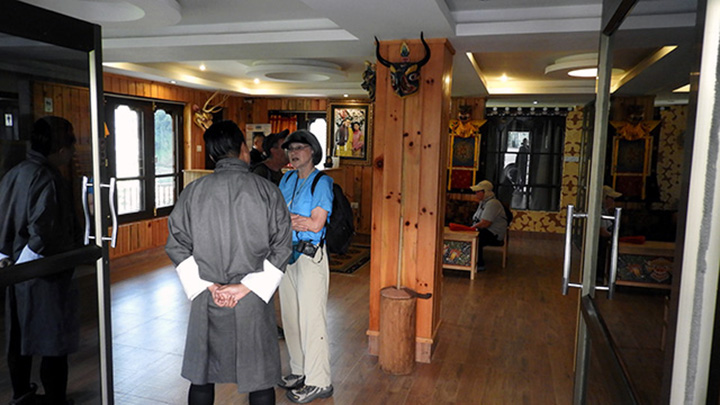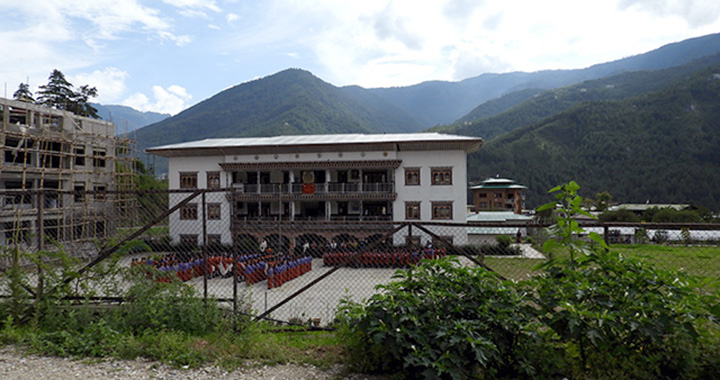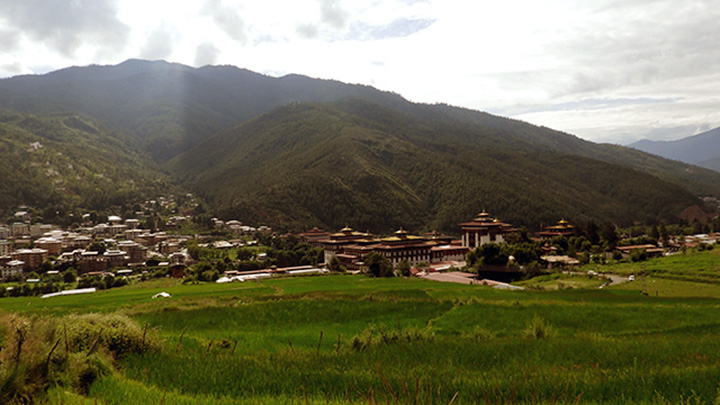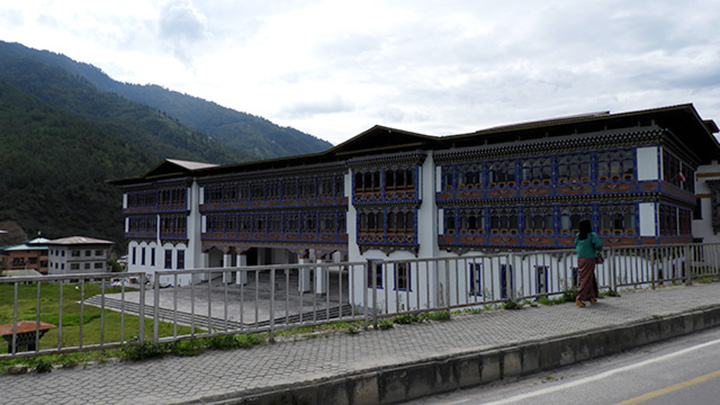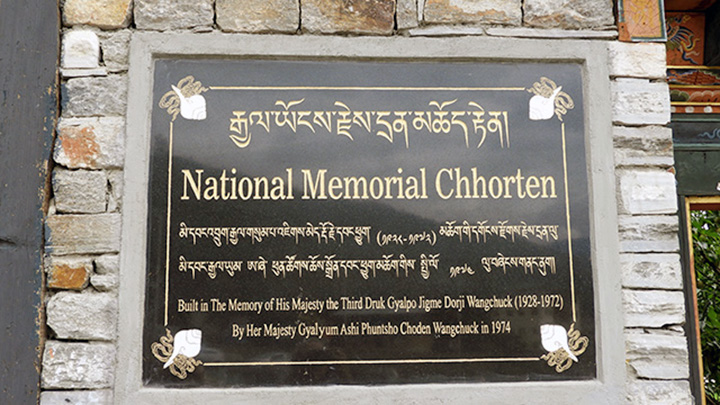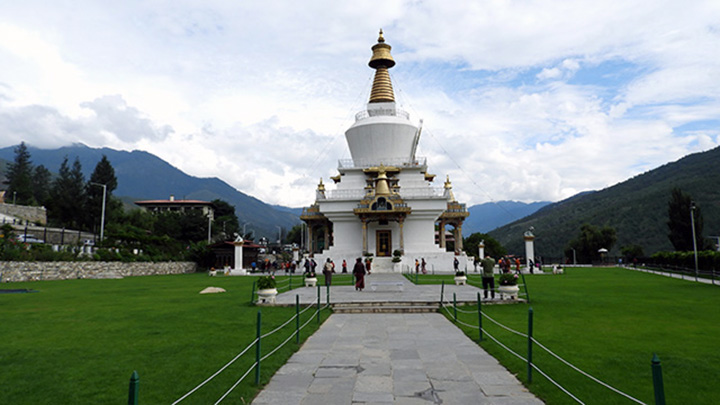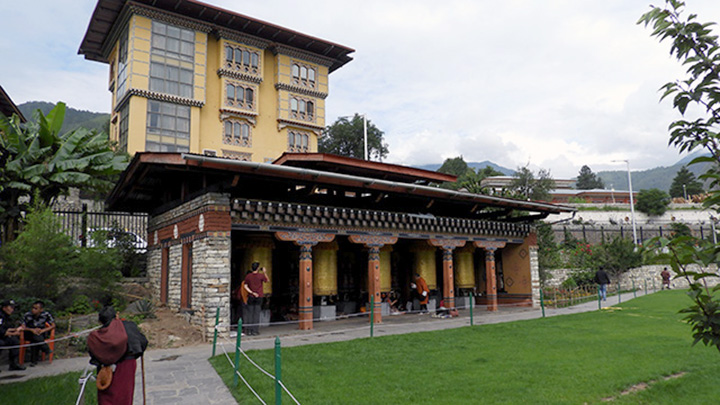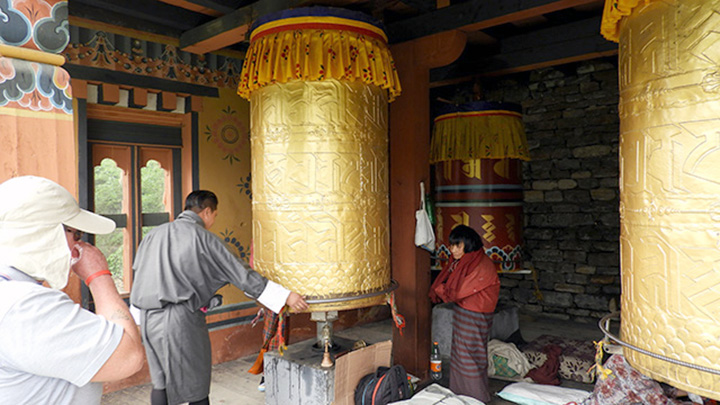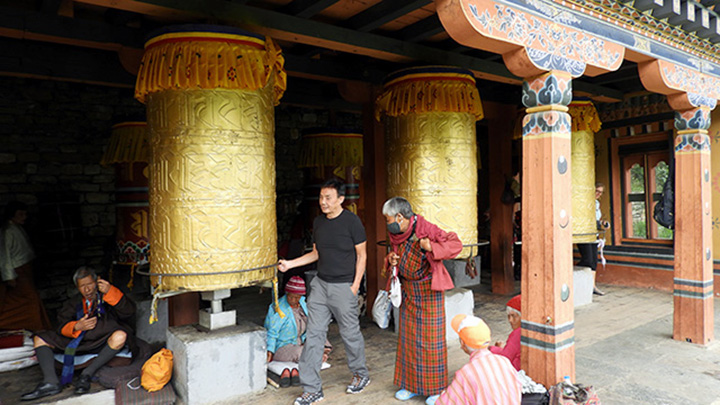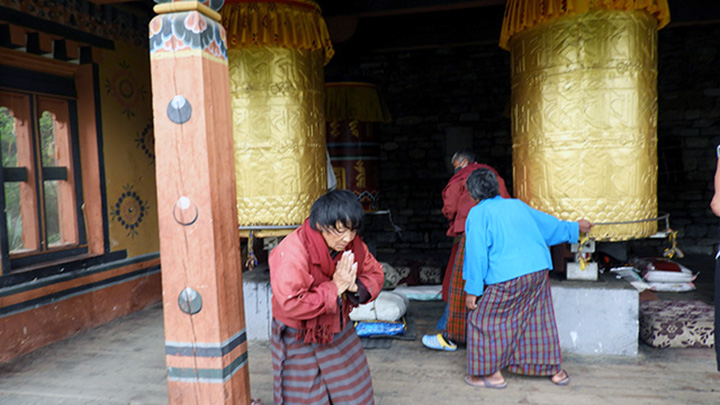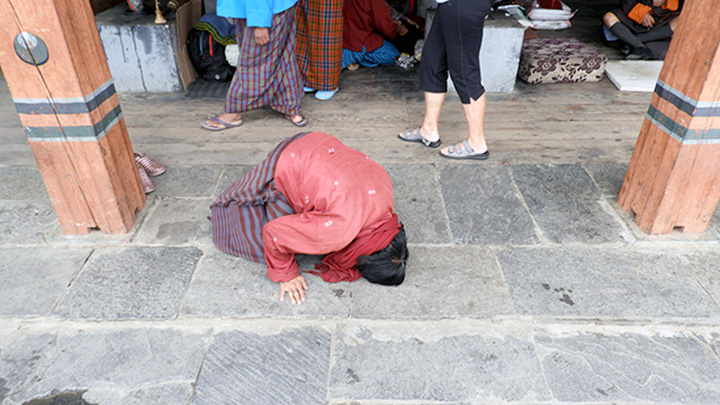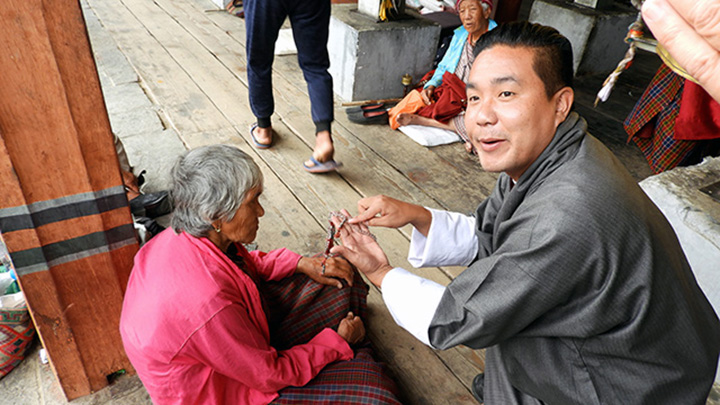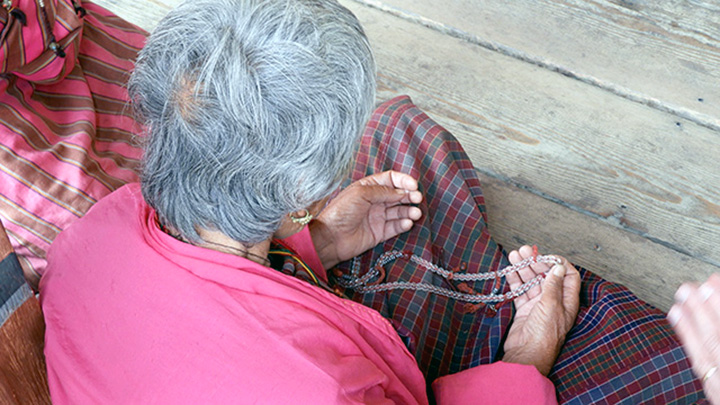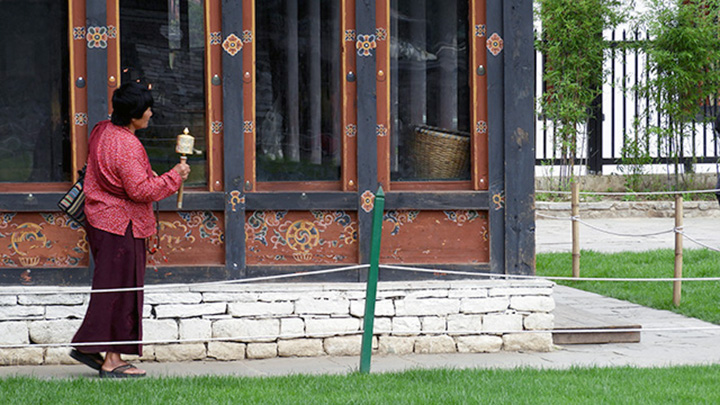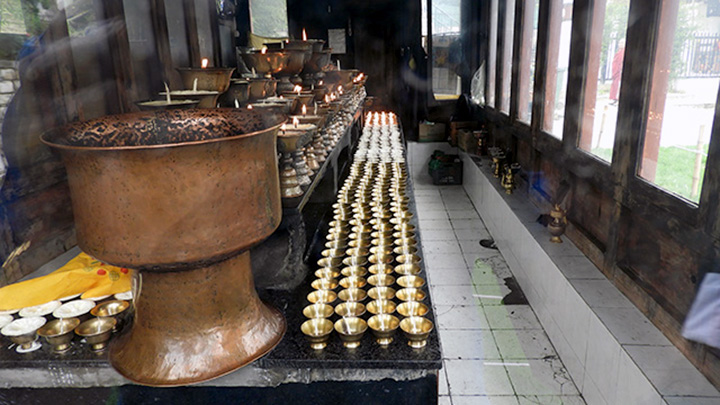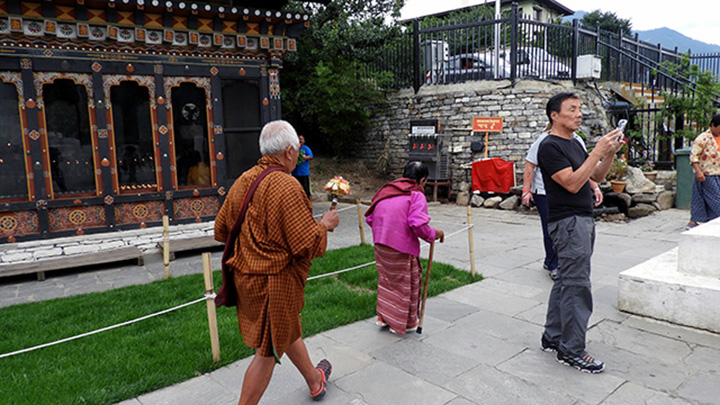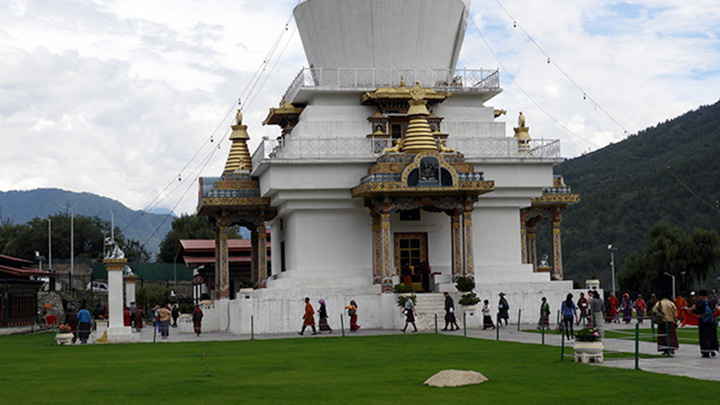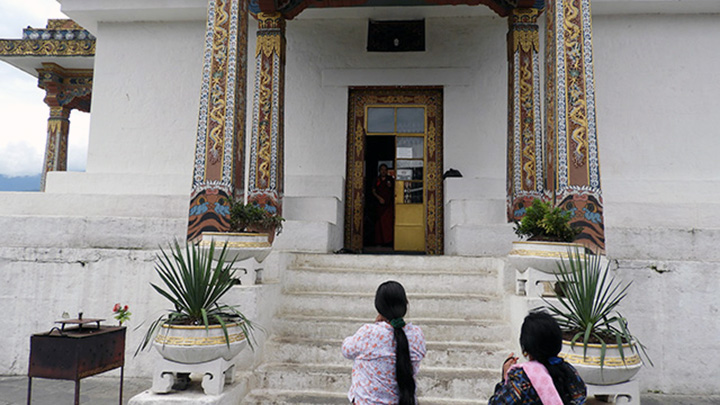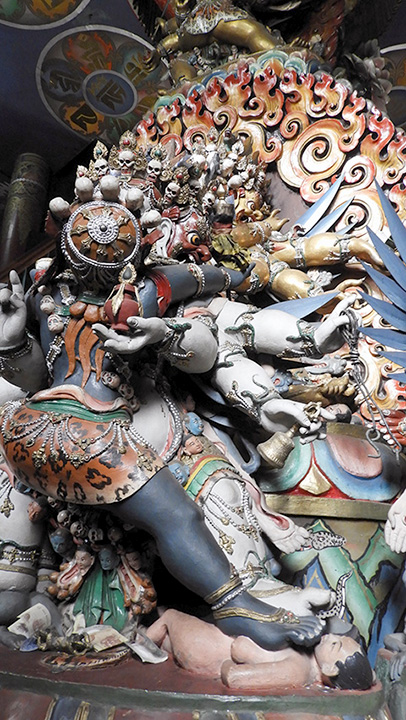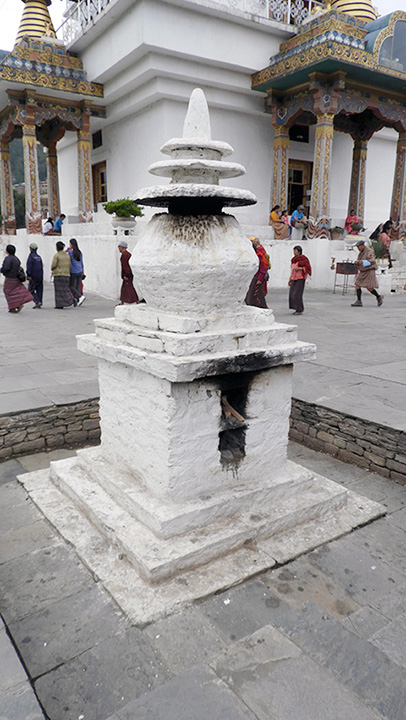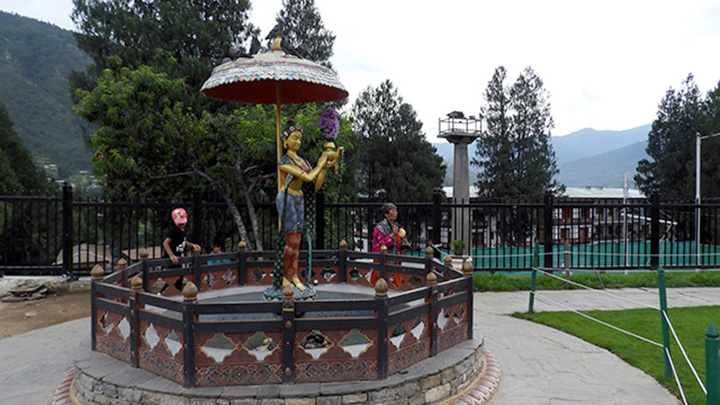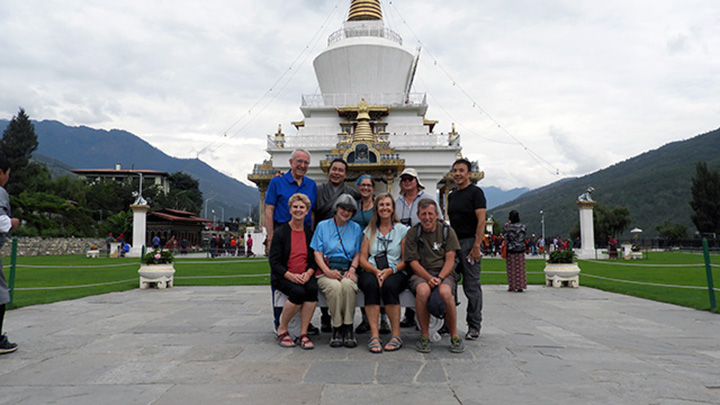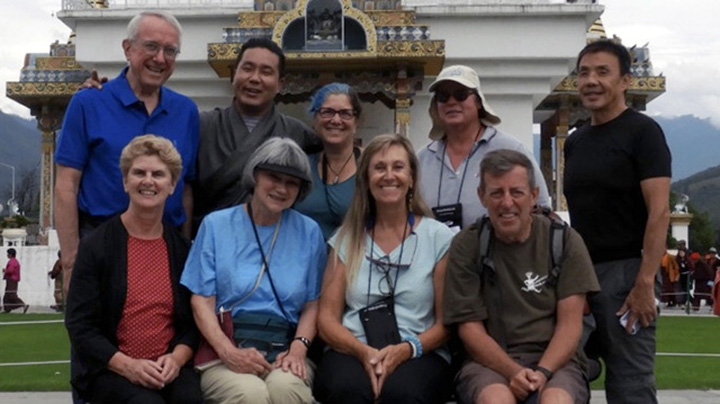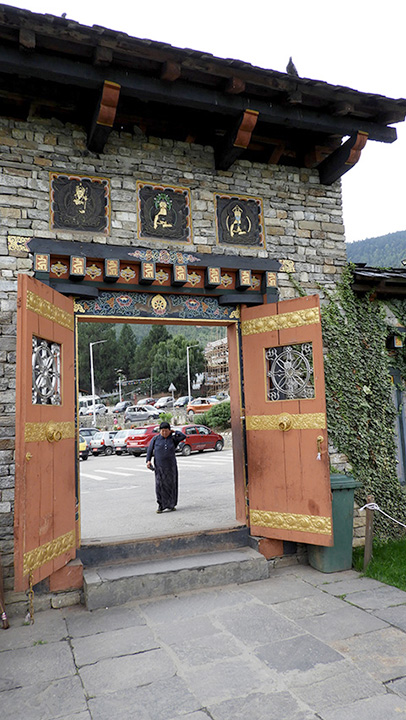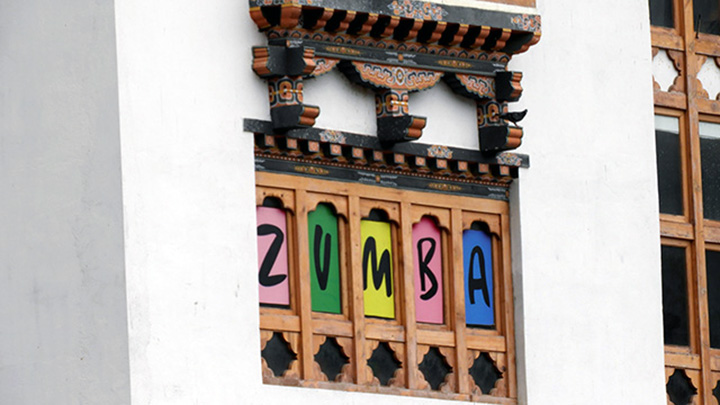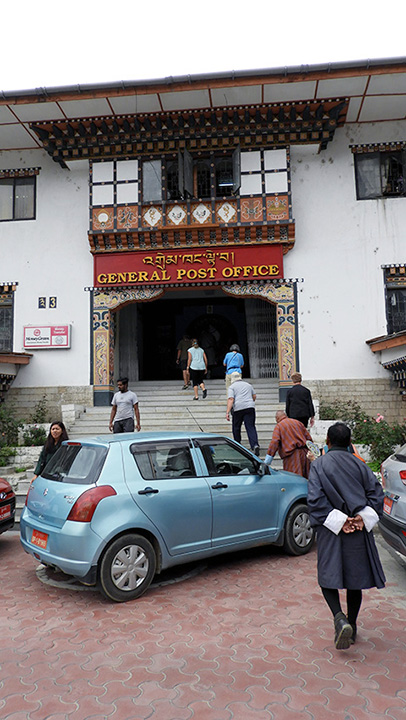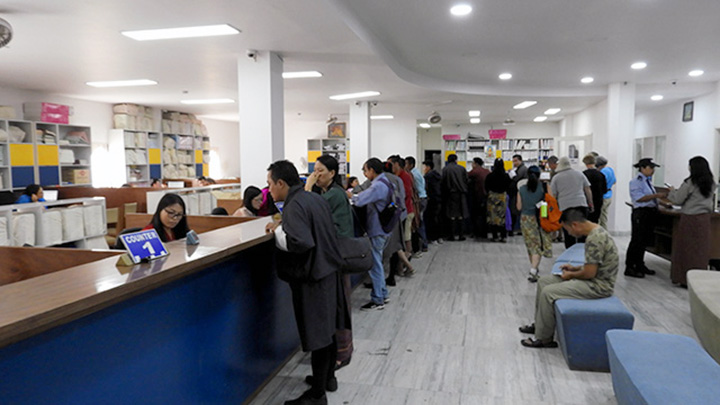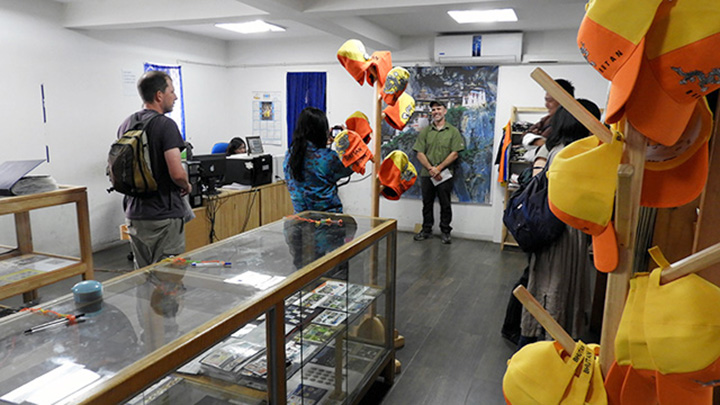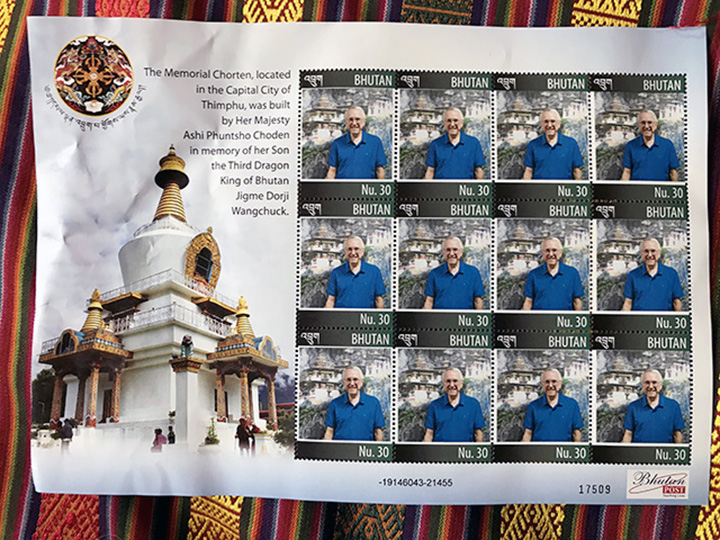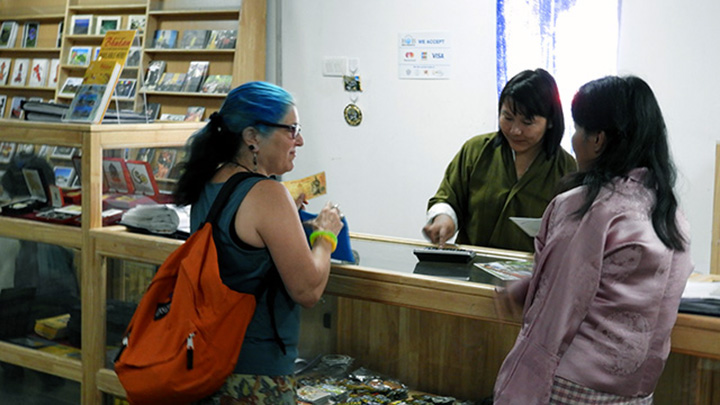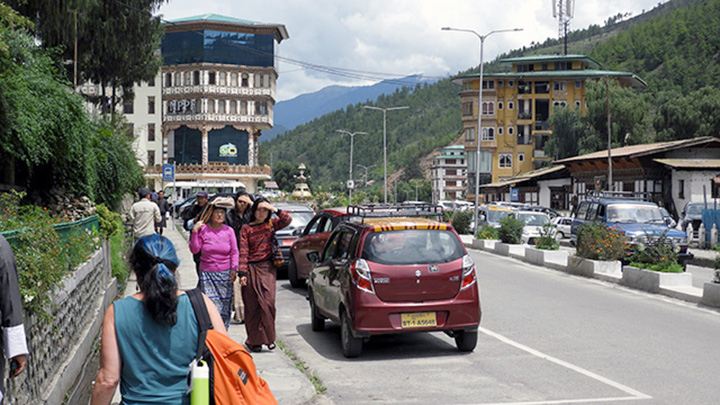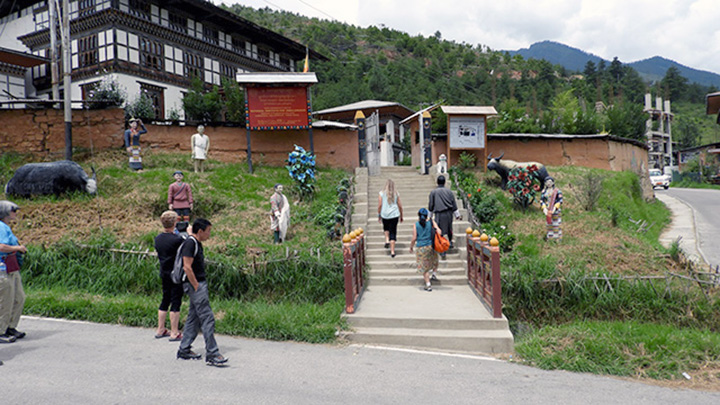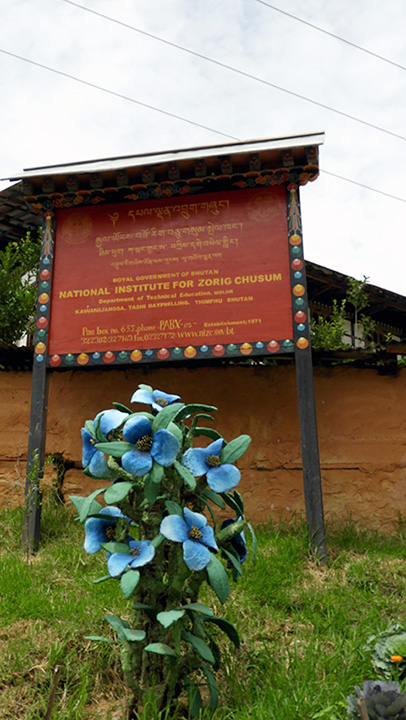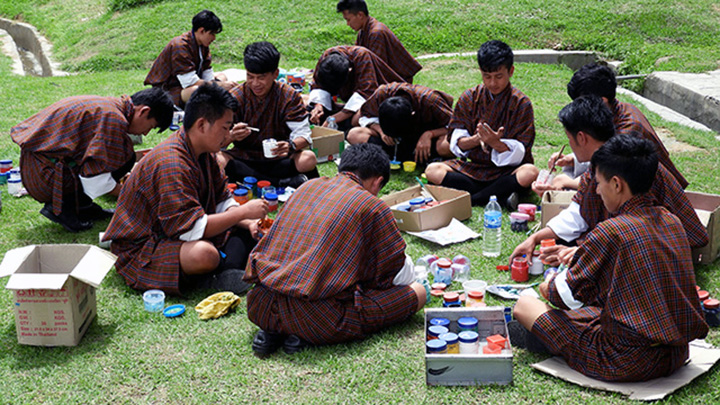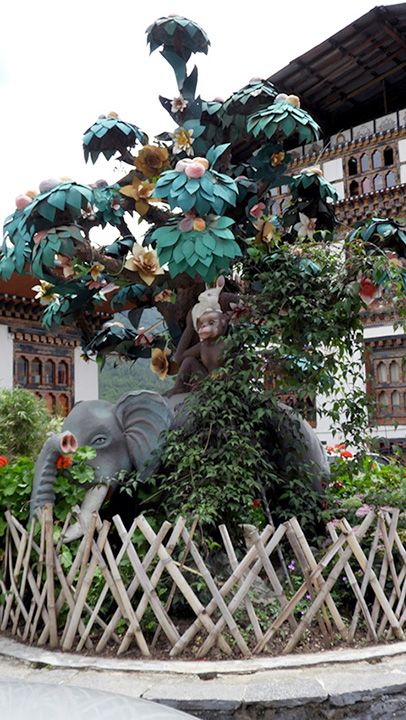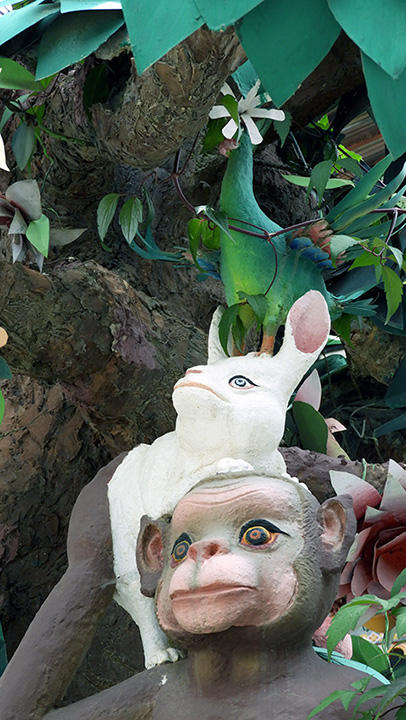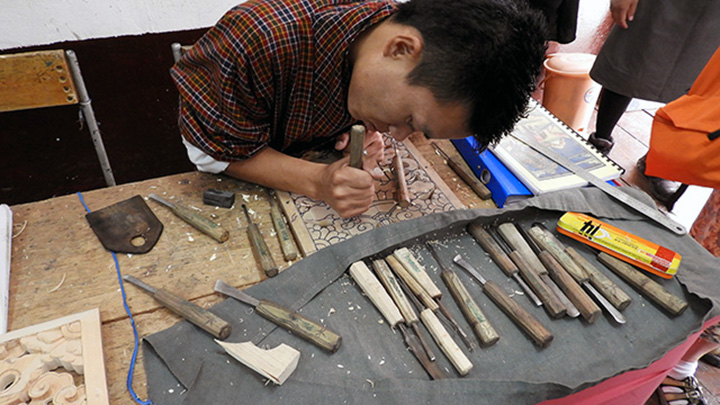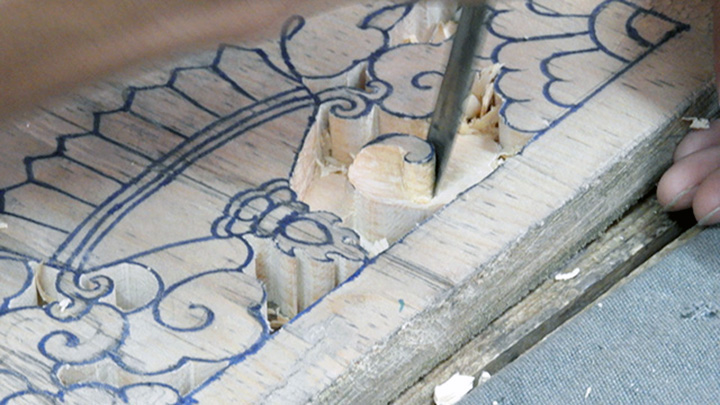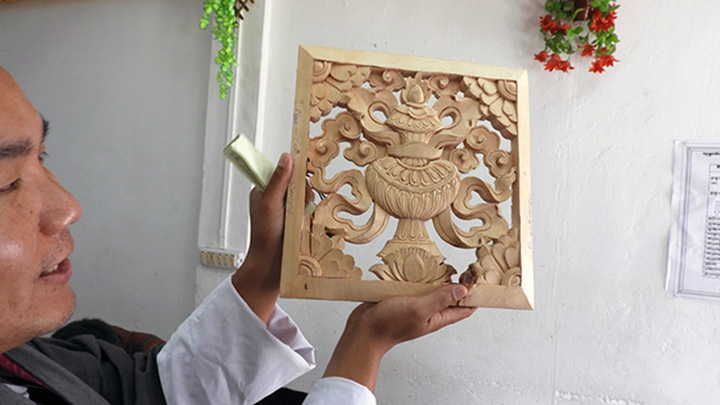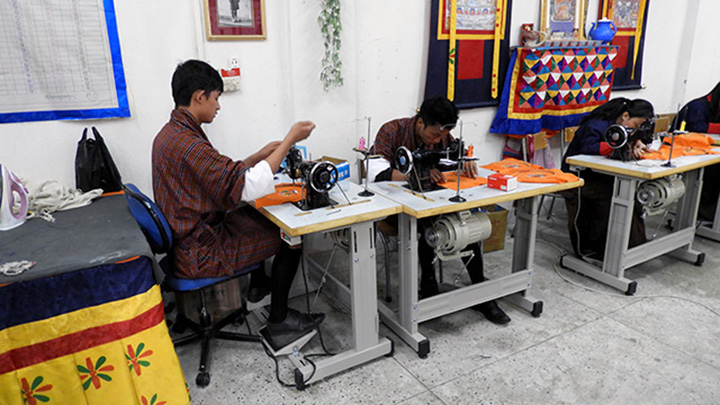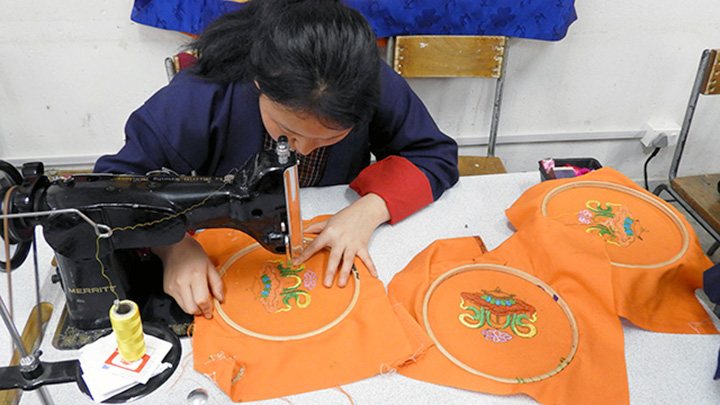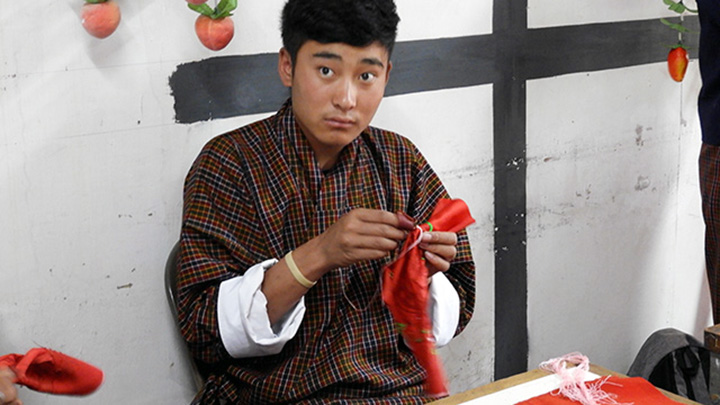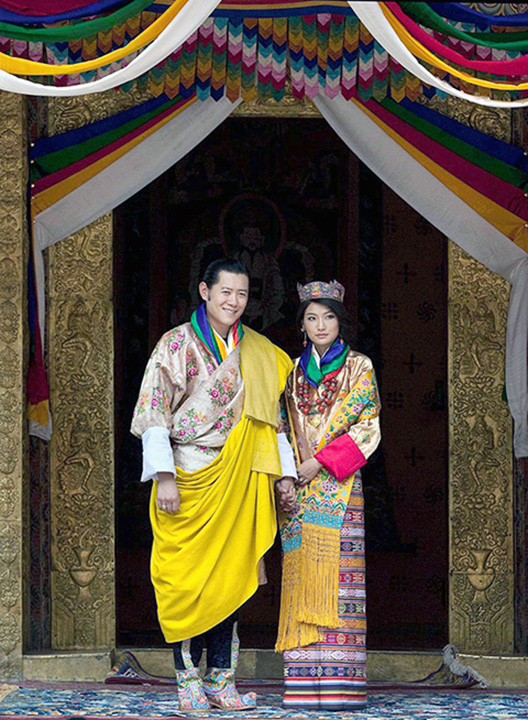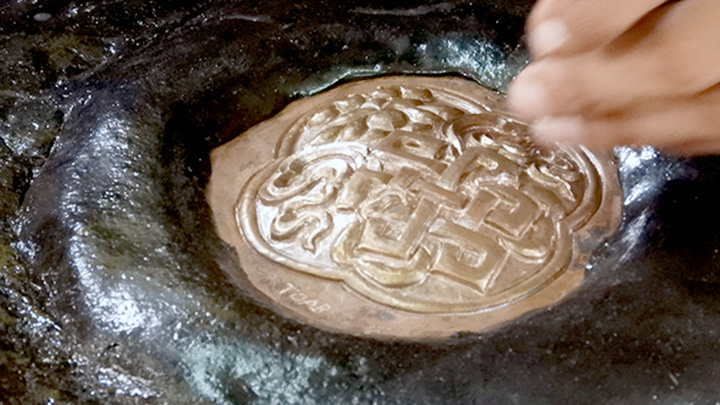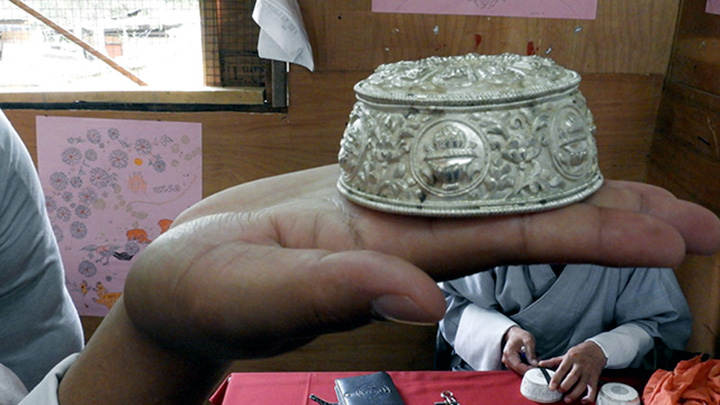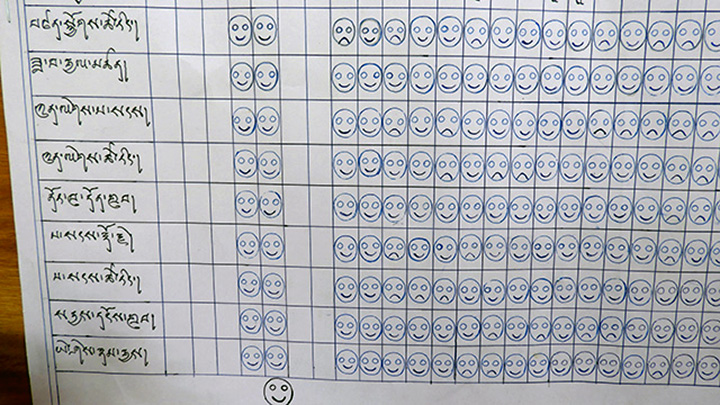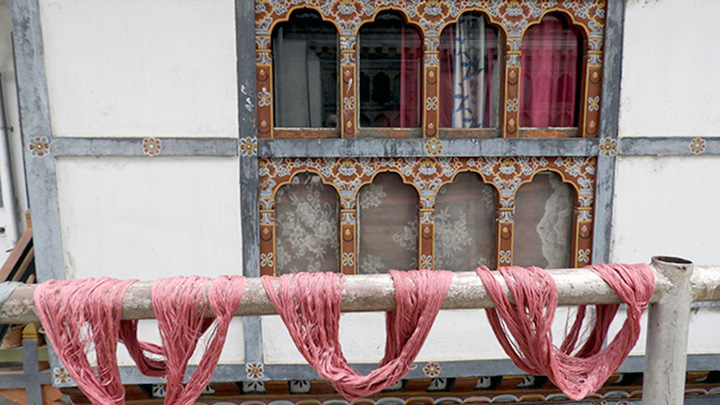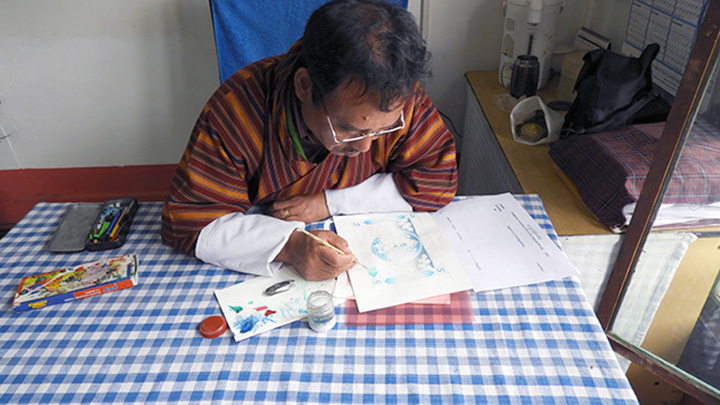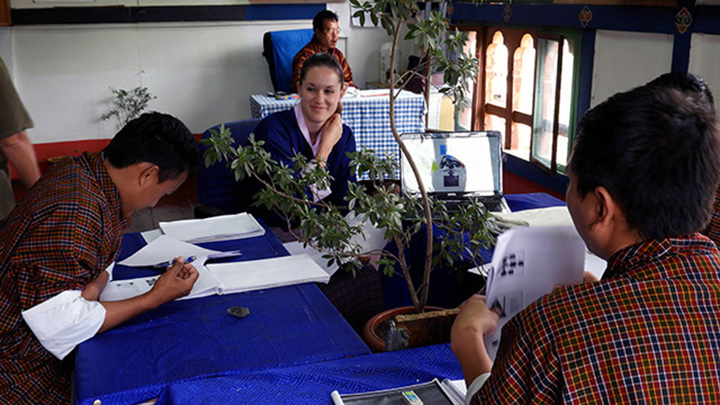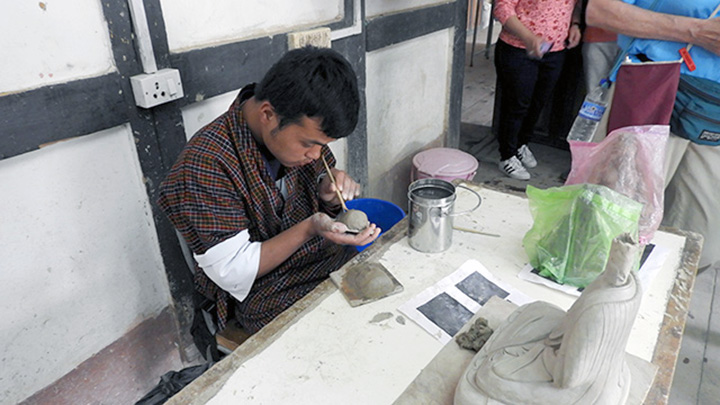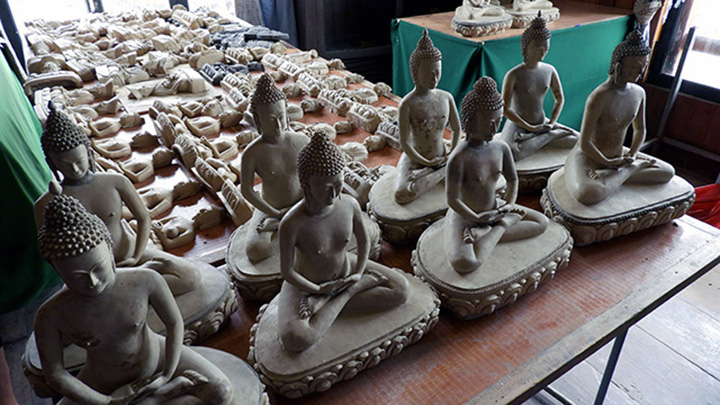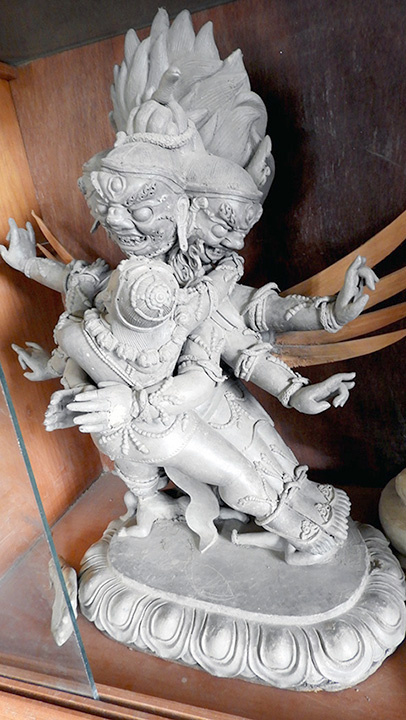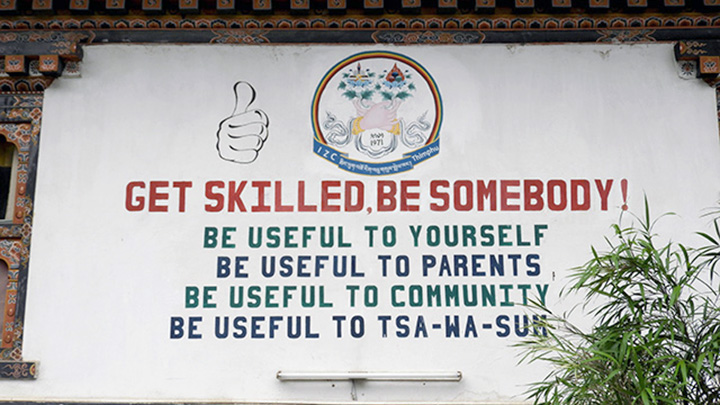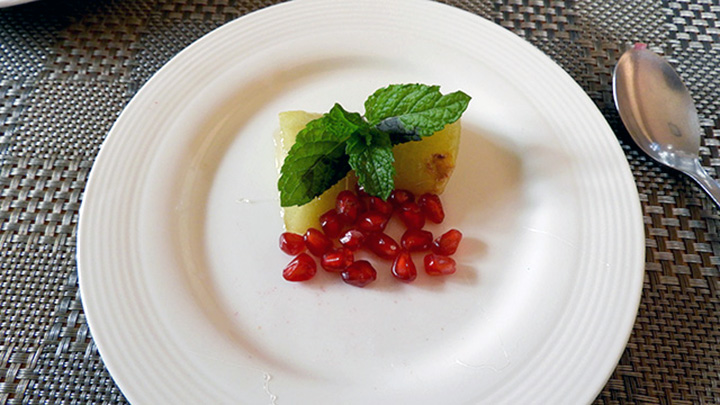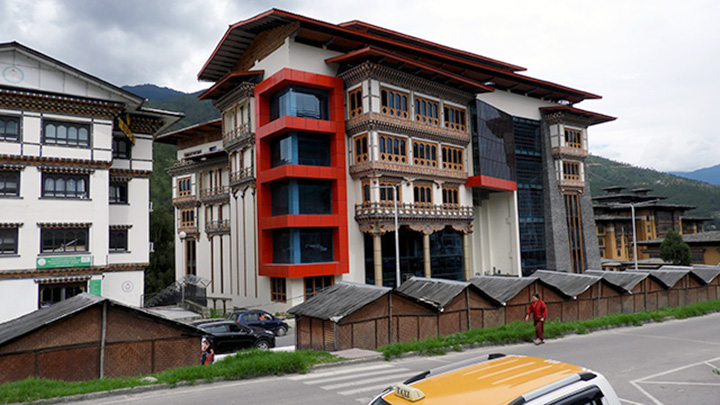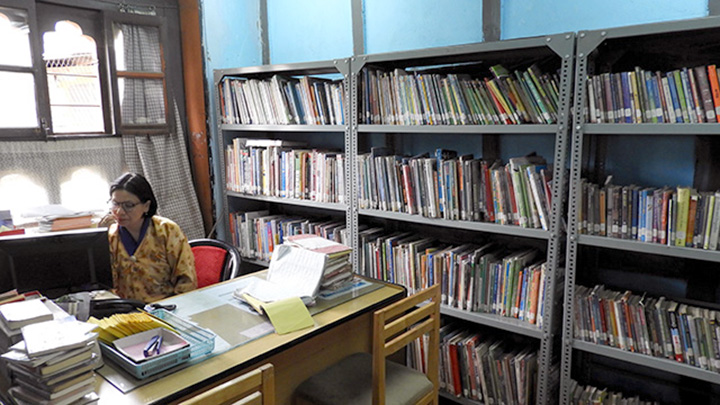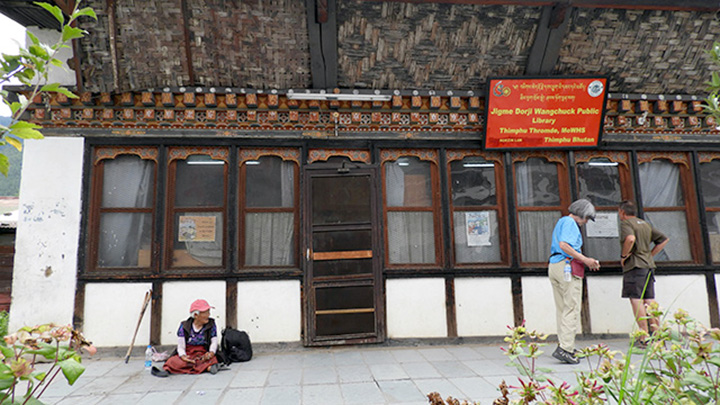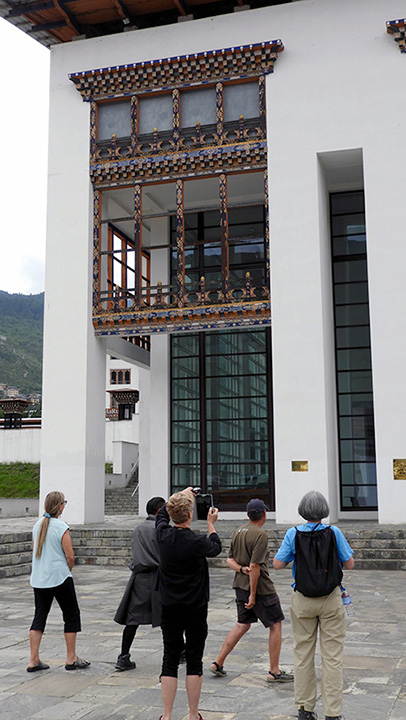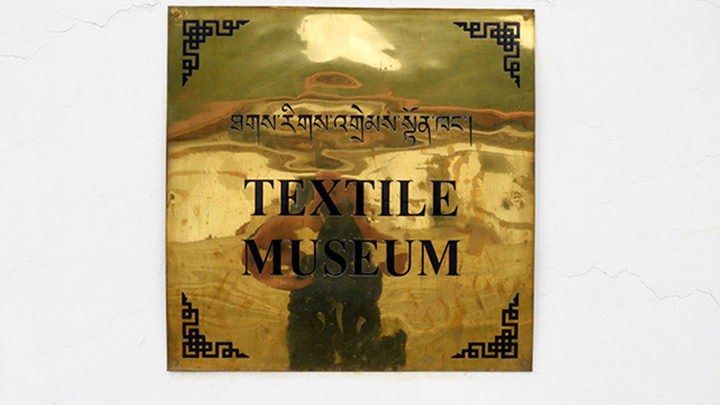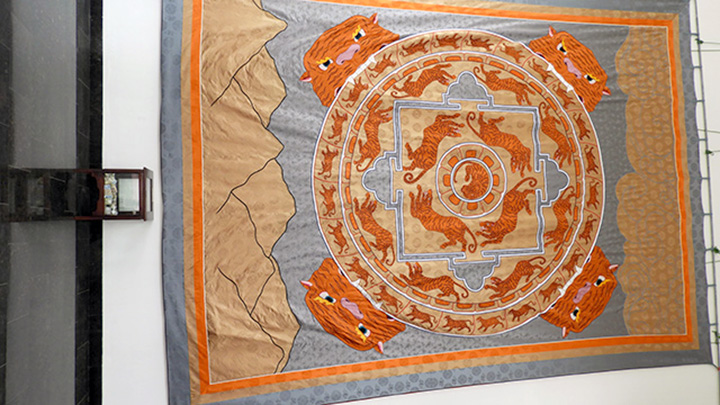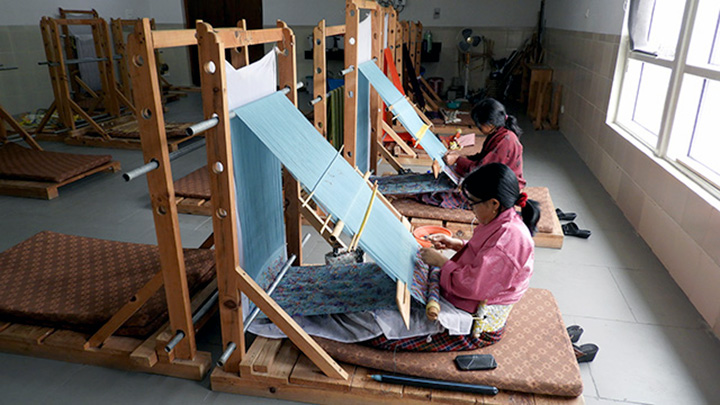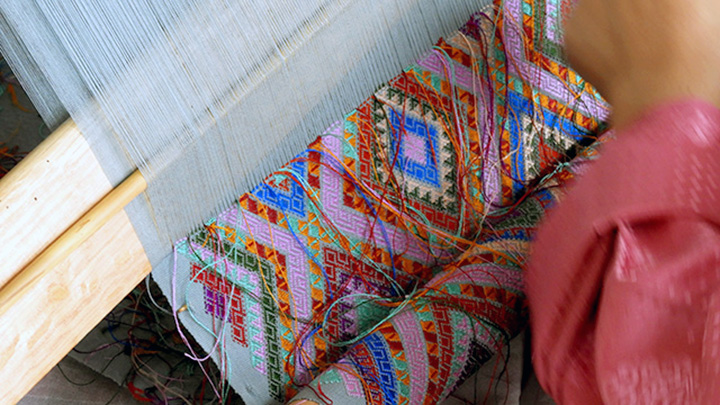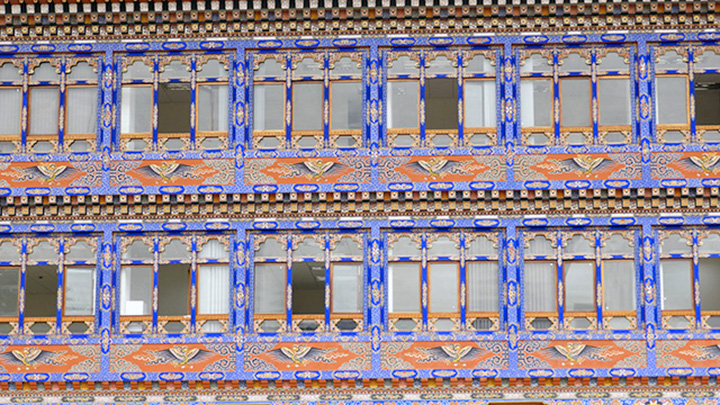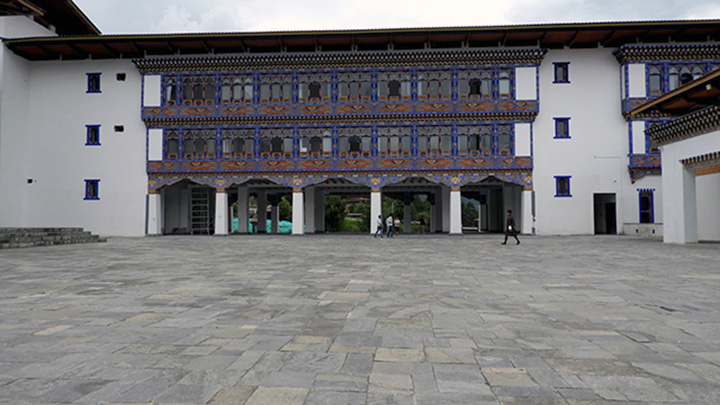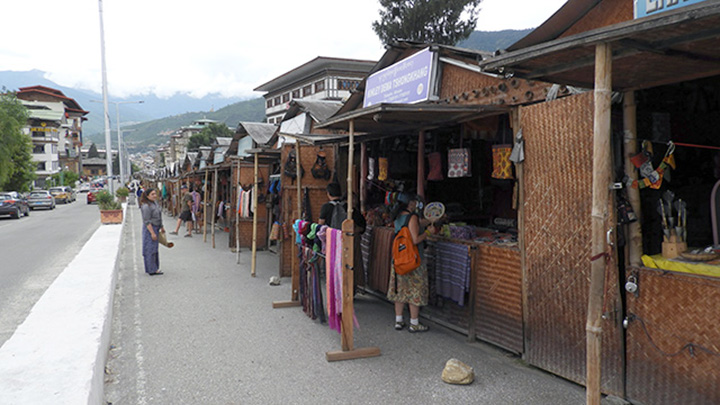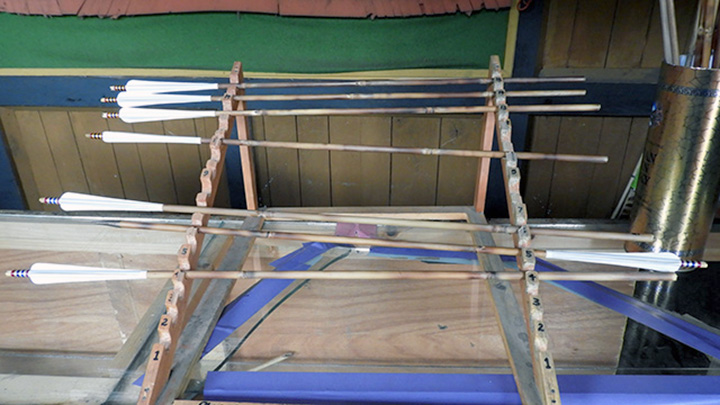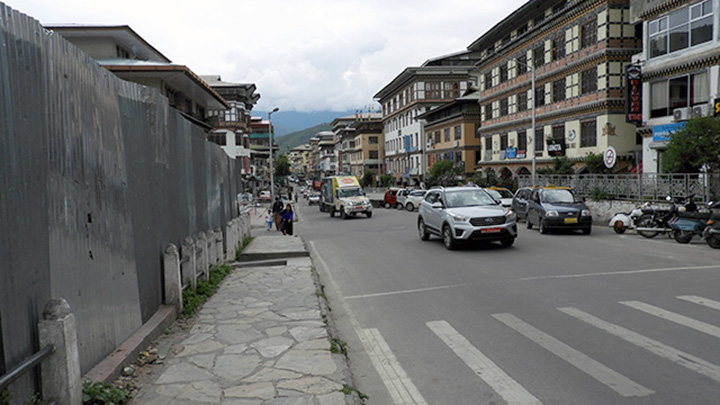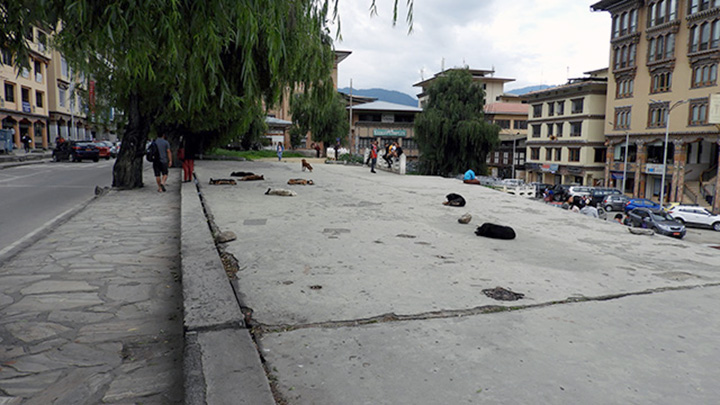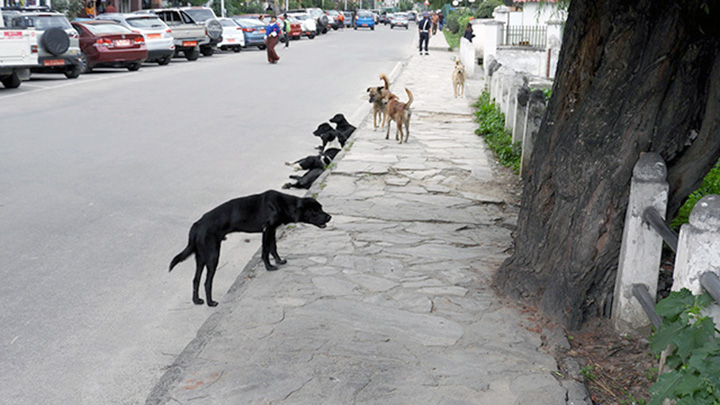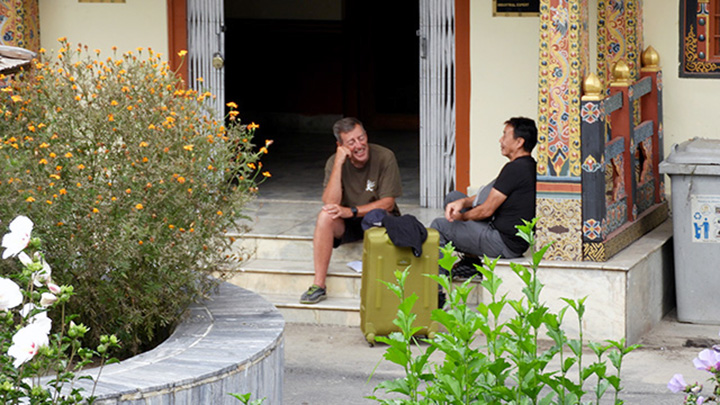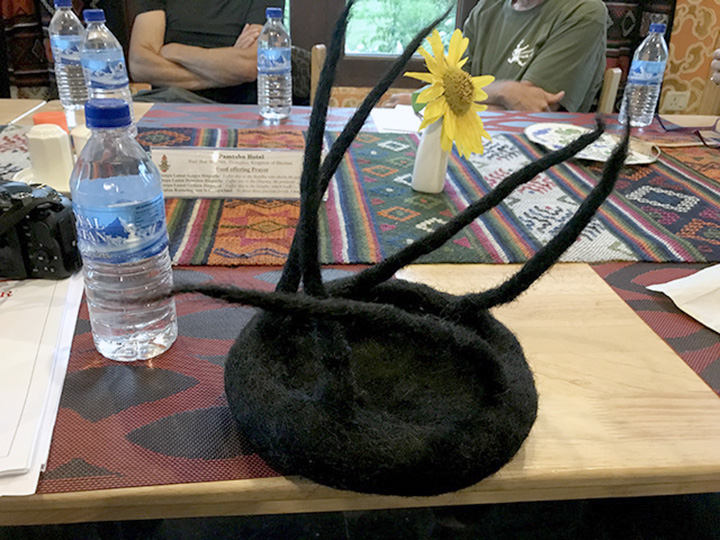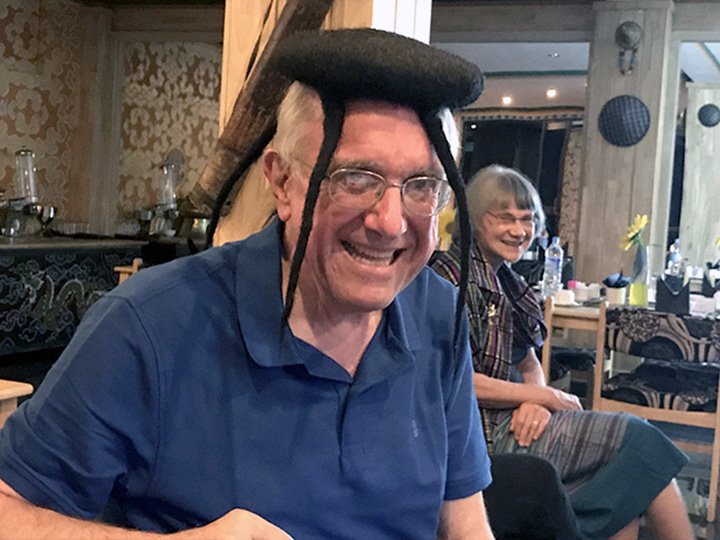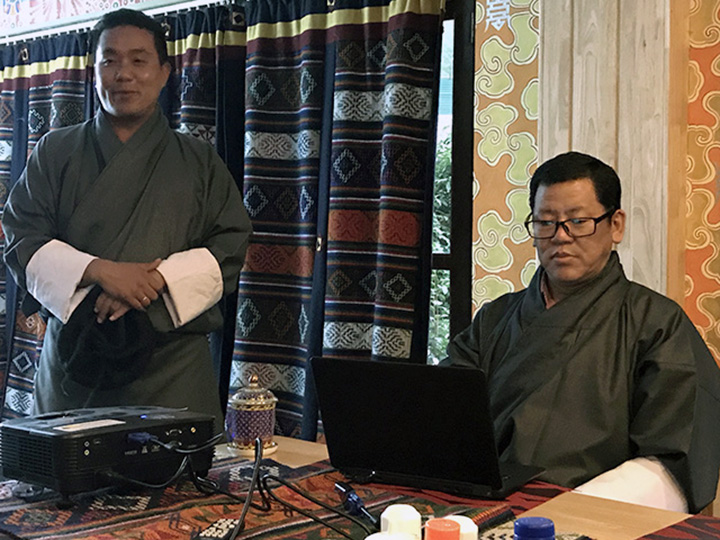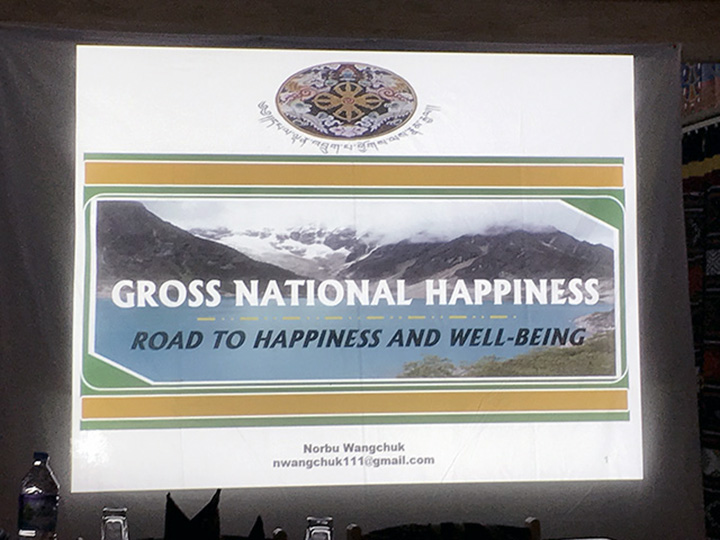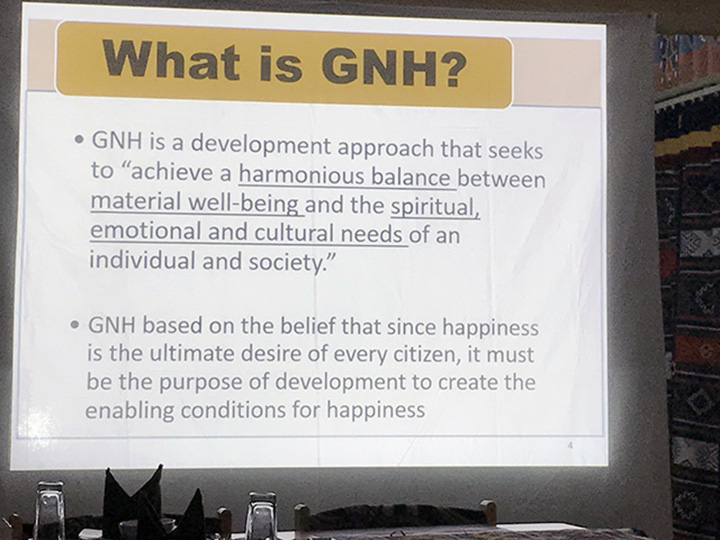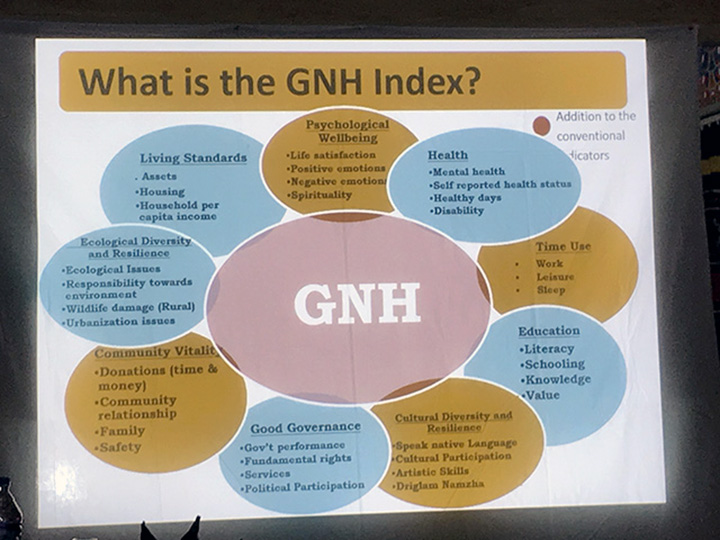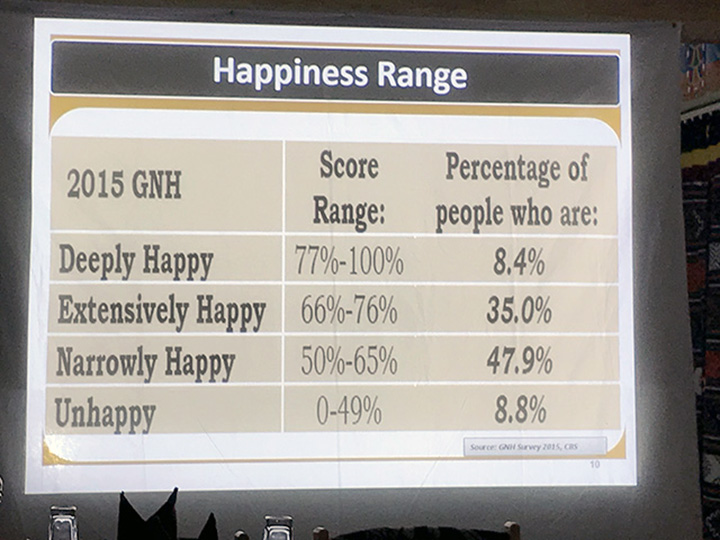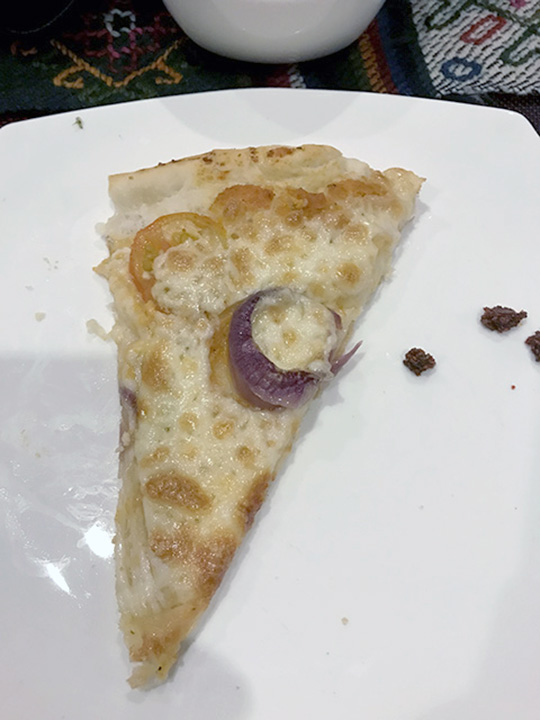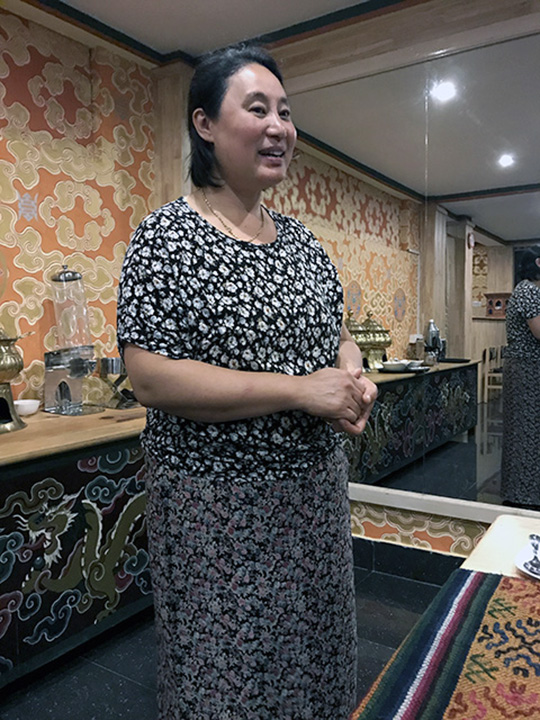|
We're going to spend the day seeing the sights in Thimphu.
Tim and Charlotte discuss plans for the day.
Look at the students all lined up for an outdoors morning assembly. I wonder if this is common practice in Bhutanese schools? We're going to visit a school in a few days...maybe we'll see then.
It's a beautiful morning. That's the dzong we visited yesterday.
Whatever that new building is, the decorations are beautiful but the building is unoccupied so far.
Tim has stopped the bus by the side of the road because I'd asked him to point out a special place if we ever drove past it -- a broadcast station called Radio Kuzoo. Road Scholar always recommends books to read in preparation for trips, books that give interesting background on the destinations to be visited, information that will be helpful in understanding what we see. I'm so glad I'd read RADIO SHANGRI-LA by Lisa Napoli before I came. It's an engaging story about the time she spent at Radio Kuzoo shortly after it first went on the air in 2006, helping the inexperienced staff learn to produce professional radio programming that would come to be embraced by young people throughout Bhutan. The Bhutanese had grown up accustomed to hearing only the same old boring state radio broadcasts, and now with the advent of democratic rule in Bhutan, they could listen to contemporary music. It was a revelation! And sure, you should read RADIO SHANGRI-LA.
Ever visited a chhorten? Ever encountered a word with a double-h? Well, I hadn't either, but here we go. This place was built by one of the wives of the second king of Bhutan in honor of her son, the third king.
"Chhorten" is another word for a stupa, and if you can find a straight answer for why they're sometimes called one and sometimes the other, you're a better Googler than I am. They come in different shapes and sizes and you can find them all over Bhutan in city parks like this one, or out in fields or by the side of the road or sometimes right in the middle of the road with lanes passing on either side. They are important religious monuments in Buddhism, symbolizing Buddha’s presence. They also hold precious Buddhist relics and sometimes even preserved bodies of renowned lamas. The shape of this Stupa represents Buddha with a crown who is seated in a posture of meditation on a lion throne. The top of the spire, with the well-known ‘twin-symbol’ uniting the sun and moon, is the crown, the square at the spire’s base is his head, the vase shape symbolizes his body, the steps (four) of the lower terrace are his legs while the square foundation base is his throne. And now you know.
Now those are some big prayer wheels.
Tim sends prayers winging their way throughout the land.
So does Dennis.
If you want to turn the wheels, you gotta get in there and work.
Devout elderly people spend much of their days here.
There are prayers all around.
Tim discusses how Buddhism has spread throughout China.
He has politely asked this nice lady to let us see how she is keeping track of her prayers.
Buddhist prayer beads, or "malas," are a traditional tool used to count the number of times a mantra is recited, breaths while meditating, counting prostrations, or the repetitions of a Buddha's name. There are 108 beads. Why 108? Good question for which there are, apparently, quite a few answers. It turns out the practice of treating 108 as a significant number comes from the Vedas, the most ancient Hindu scriptures, and predates Buddhism by about a millennium. But for Buddhists it seems 108 comes from the total number of feelings classified in different ways by the Buddha, or something like that. Looks like a rosary to me.
This lady carries a portable prayer wheel called a "mani."
Here's my first exposure to the butter lamps I'd read about prior to the trip. They are supposed to be fueled by yak milk butter but that's too expensive these days so they use vegetable oil. And why lights? Light means understanding because light represents wisdom and removes and dispels misunderstanding. As all of our suffering comes from not knowing and not seeing, offering lights or butter lamps indirectly removes confusion. Well, that's what they say. And how many lamps are there? You just know it's 108.
That guy has a really fancy mani.
Tim talks about the monarchy in Bhutan.
Everybody's walking around the chhorten, and there's a good reason for this.
In the Buddhist tradition clockwise circumambulation of an object of veneration is a sign of respect. It is done meditatively, keeping one's right toward the object as a reminder that the Buddha's teachings are in the center of our lives.
So let's get moving.
We can go inside but we can't take pictures.
But if we could have taken pictures, we might have seen displays like this. I don't know about you, but for me this is so dense in imagery it's almost too much to take in. The two figures represent strength joined with compassion or something like that, and the poor body getting trampled reminds us that we're lowly, and all the heads -- some skulls and some rotting and some fresh -- remind us that we're all gonna die. And there's more, lots more, too much more for me, anyway. But interesting and kinda beautiful, I think. Maybe.
They burn incense in that. Or juniper branches which smell pretty good too.
There was a pretty fountain.
And here we are, the Road Scholars.
Want to see us up close?
C'mon, time to go.
Bhutan has definitely entered the 21st century.
Time for the Road Scholars to exchange money and stock up on stamps and postcards.
Here we are, lined up at the bank to convert dollars to ngultrum (nu). They were very particular about American money -- nothing wrinkled or soiled got exchanged. Fortunately I had enough fresh twenties to get me a couple of hundred dollars worth of ngultrum with a few extras to exchange with Leslie, whose American currency just wasn't up to the standards of the Bank of Bhutan, or, as they like to call it, BOB.
That guy is getting his picture made for his very own special sheet of Bhutanese postage stamps. Let's see, would I like to pay for my own picture on a postage stamp?
Sure, why not?
Nina is spending some of her new nu.
According to Tim, more than half the vehicles in all of Bhutan are located in Thimphu.
Let's go to the National Institute for Arts and Crafts.
Zorig Chisum means arts and crafts. Told you.
The front lawn is full of students busily mixing paints.
The competition is stiff to get into this place. You must have artistic ability and you gotta be smart. This is where Bhutan produces the artists who put the beautiful decorations on structures and other works of art throughout the country.
There's a beautiful work of art now. The Four Harmonious Friends who we'll see everywhere we go. They are a favorite motif in Bhutan and there's a story behind them. I'll get to it later.
For now here's a close-up of three of the friends -- the monkey, the hare and the bird. Sorry elephant, you were too big to fit in the frame.
This guy is practicing the art of wood carving.
Careful does it.
The finished product is pretty impressive. You can find this sort of work all over Bhutan.
Learning needlework.
And embroidery.
Everybody can do it.
Boots fit for a king.
Some guys look great in clothes like that, like, well, the king here. I think the style doesn't suit me, though.
Metal craft is hard work.
And detailed.
But the results look mighty fine indeed.
I couldn't read the names of the students, but their grades were pretty easy to figure out. Look at them carefully.
Newly dyed yarn hanging out to dry.
Wonder what's upstairs?
Drawing class.
Copying a ferocious beast.
This fellow is working in watercolors.
Very nice.
This lady from Canada or Australia or somewhere was giving the students lessons in Buddhism. I never did quite figure that one out.
Modeling clay.
We saw temples with thousands of these Buddha statues. Somebody's got to learn to make them.
And some of it is quite intricate.
What high school would be complete without exhortations on the walls? And what's Tsa-Wa-Sum? King, Country, People. And that's it for the school of arts and crafts.
Dessert at lunch was so pretty I had to take a picture. Pomegranate seeds and pears in a sweet syrup with mint. Mmm.
That's the new modern library. Note the mixture of modern and traditional architectures. Very nice.
But across the street was a simpler library. At the suggestion of the author of one of the books she'd read prior to the trip, Nina brought some materials to donate.
Charlotte and Wayne go exploring outside the library.
And now we've arrived at the National Textile Museum of Bhutan.
Told you.
There were plenty of beautiful displays of textiles, but few we could take pictures of.
We did see some weavers hard at work.
Along with some impressive examples of their work.
I found some decorative pillow cases for sale in the gift shop and now, with the help of some stuffing from Amazon, my sofa looks classically Bhutanese. Don't you think? Sorta?
These people really know how to decorate a building.
Nice.
Tim says that in prime tourist season this stretch of shops along the road is packed with shoppers. We pretty much had them all to ourselves today.
Ourselves and the stray dogs.
I was fascinated by the shop that sold the bamboo arrows the archers were using the other day.
Then I went off on my own to explore for a little while. I didn't stray far from the main drag, but there were some interesting sights.
Like the local traffic light.
And the stray dogs.
There are entirely too many stray dogs in Thimphu, and the people there know that, but they're Buddhists, which means they can't just round up the dogs and gas them. Sentient beings and all that. So they've instituted a spaying and neutering program. Most of these dogs had notches cut out of their ears which meant they'd been "fixed." They say the stray dog population has gone down noticeably in the past five years.
Wayne and Dennis are enjoying a chat while they wait for the group to gather at this textile shop.
Bhutan does produce some lovely textiles.
Now we're back at the hotel for the evening lecture and dinner, and Tim is modeling some special headgear.
It's called a tsipee cham and it's made of yak felt with long twisted tufts, said to prevent the rain from running into yak herders' faces.
No rain will drip on Bill's face tonight.
Our guest speaker this evening was Norbu Wangchuk, formerly with Bhutan’s Gross National Happiness Commission, and now the director of technical and vocational education in Bhutan. He gave us an hour long PowerPoint presentation on how a country can measure the happiness of its citizens. He told us that of all the countries in the world, currently, Finland is the happiest and Bhutan is 98th on the list. So they are looking for ways to improve well being and happiness among all the citizens in Bhutan. Well I know bureaucracy when I see bureaucracy, and this was bureaucracy at its very finest. Bhutan will be the happiest country on earth in a few years, just you wait and see, cuz the bureaucrats are on the case. He told us this program will likely not make sense to us because we are Americans and our culture is different. Well, that's what he said.
Who wouldn't be happy to sit through a one-hour PowerPoint presentation?
It's got bullet points and everything.
And a chart.
And a Venn diagram.
By the time this was over I felt deeply happy. Yes indeed. And I hope you feel deeply happy now too.
And if that didn't cheer you up, how about some Bhutanese pizza for dinner? It was, believe it or not, quite good.
And this nice lady, the proprietor of the hotel, made the pizza totally by hand just for us homesick Americans. People here are so nice, and that's something I'm not kidding about.
|

